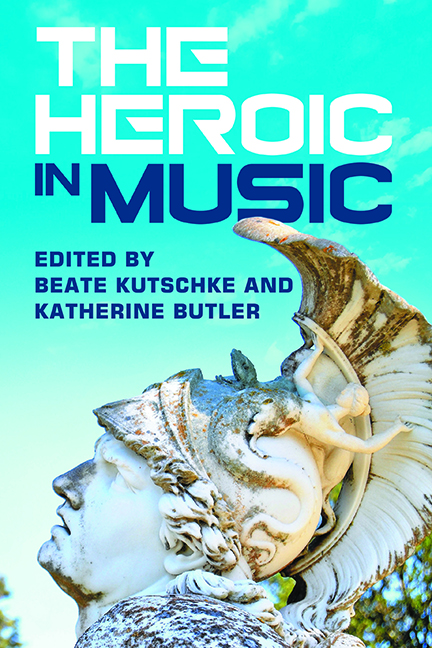Book contents
- Frontmatter
- Contents
- List of Illustrations
- Notes on Contributors
- Introduction
- Part I The Configuration of Heroic Music as a Tool for Shaping Moral and Political Identity
- Part II Music, its Ethics and Politics – Beyond ‘Beethoven Hero’
- Part III Heroic Music and its Moralities in Dictatorships and Post-Heroic Democracies
- Bibliography
- Index
4 - Handel’s Heroes
Published online by Cambridge University Press: 16 July 2022
- Frontmatter
- Contents
- List of Illustrations
- Notes on Contributors
- Introduction
- Part I The Configuration of Heroic Music as a Tool for Shaping Moral and Political Identity
- Part II Music, its Ethics and Politics – Beyond ‘Beethoven Hero’
- Part III Heroic Music and its Moralities in Dictatorships and Post-Heroic Democracies
- Bibliography
- Index
Summary
Handel's period in England has been often deemed an ‘age without a hero’. This is particularly true of the era's poetry, prose, and drama, which scholars describe with phrases like ‘antiheroic propaganda campaign’, with references to the ‘disappearance of heroic man’, and with assertions such as, ‘All heroism becomes problematic… ineffectual, and anachronistic’ in this literature. These assessments pertain to a particular heroic mode, best described by its chief proponent, John Dryden, who proclaimed in 1673 that his ‘heroic plays’ were designed to show ‘what men of great spirits would certainly do, when they were provok’d, not what they were oblig’d to do by the strict rules of moral virtue’. Such earlier notions of heroism met resistance in Handel's day; when eighteenth-century authors weren't parodying Dryden's idea and adopting frankly antiheroic stances, it was precisely characters of ‘moral vertue’ that occupied central places in much of their writing, particularly the so-called ‘sentimental’ literature of the mid-century epitomized by Richard Steele's plays and Samuel Richardson's novels.
Modern scholars give various explanations for why the ‘heroic action’ of Dryden's dramas was replaced by the ‘moral action’ of later works; these terms come from Laura Brown, who links the change to the rise of the novel and to what she sees as the concomitant dominance of the closet over the theatrical pit as the major artistic site of aesthetic and socio-political influence. G. J. Barker-Benfield has traced the transformation to broader social movements, principally the campaigns for the reformation of manners that gained influence around the turn of the century. Elaine McGirr has offered an explicitly political reasoning, positing that eighteenth-century writers eschewed grandly heroic deeds because they associated such aesthetics with ‘the twinned figures of Dryden and James II… a powerful symbol of the Restoration ethos and style’ – hence not only outmoded, but potentially seditious in the years after James's deposition in the Glorious Revolution of 1688.
- Type
- Chapter
- Information
- The Heroic in Music , pp. 69 - 88Publisher: Boydell & BrewerPrint publication year: 2022



